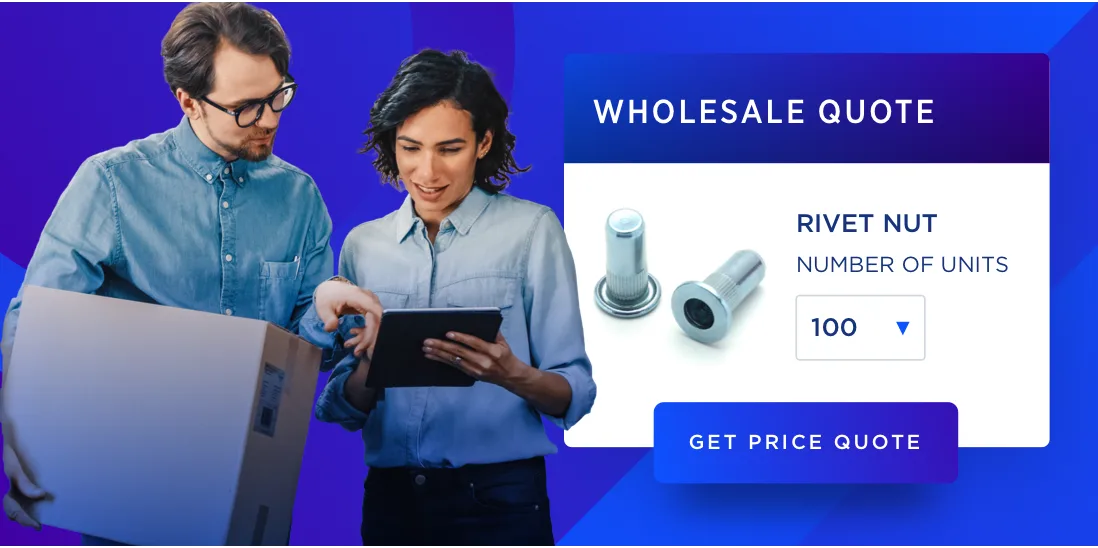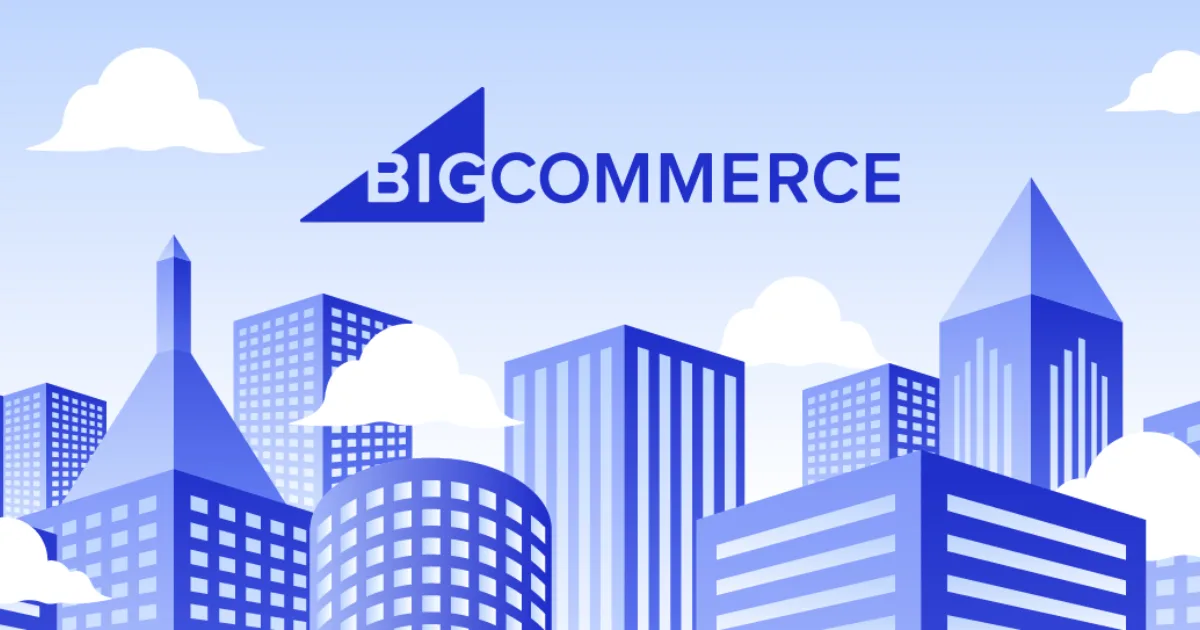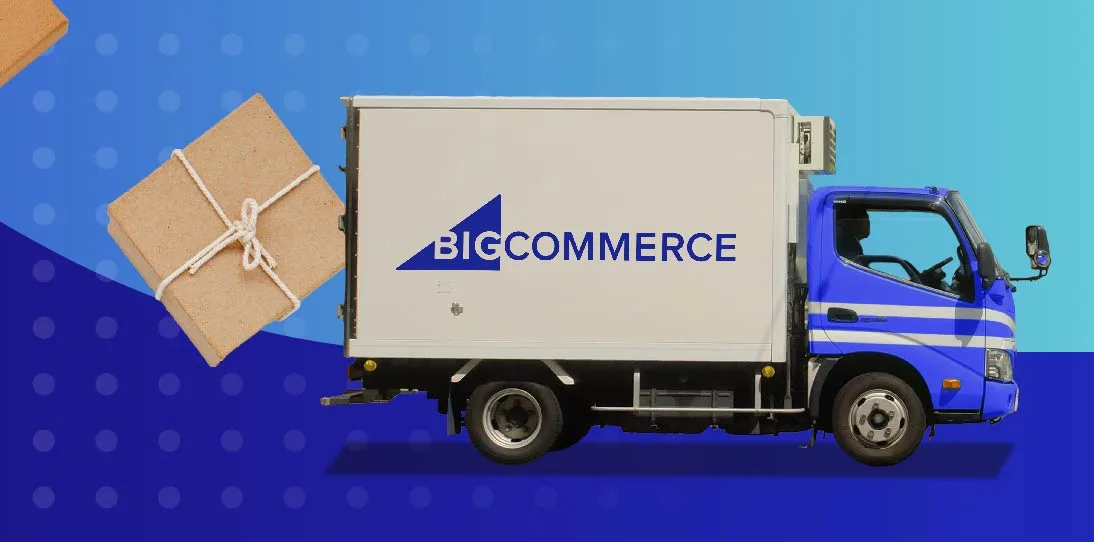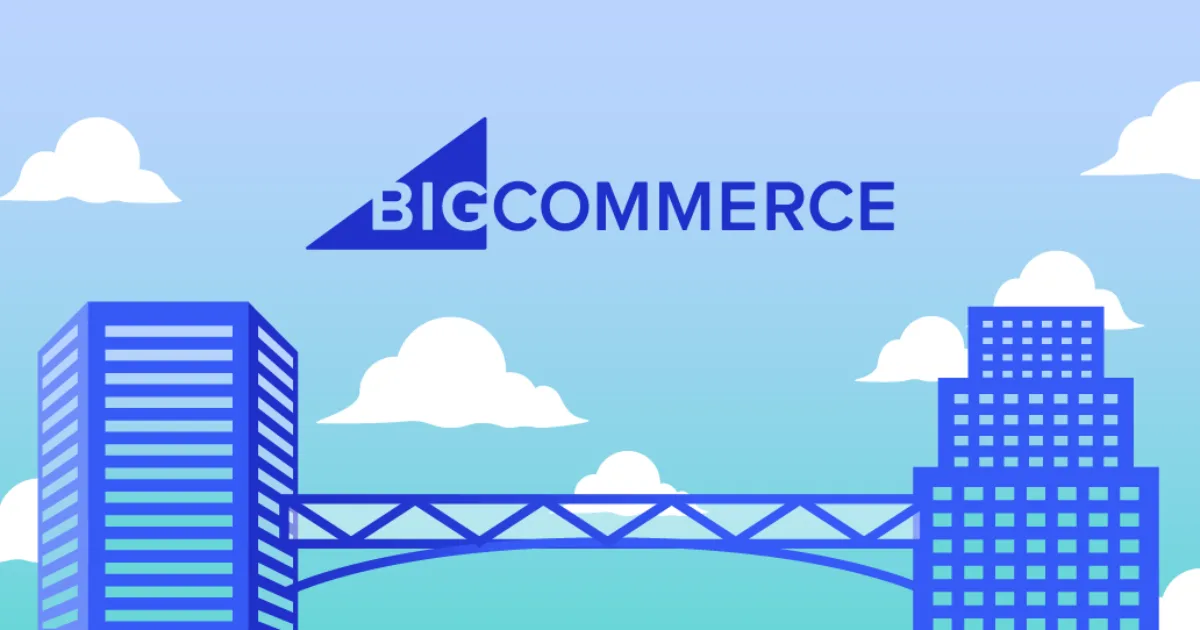by Haylee Reed
Fading are the days of cold calling, offline marketing activities, and paper-based transactions — B2B selling is undergoing a digital transformation.
Business-to-business ecommerce — the sale of goods or services through online transactions between businesses — is estimated to grow annually by 11%, reaching over $3 billion by 2027.
Historically, B2B businesses have been slow to adopt ecommerce. But with the global pandemic and evolving buyer expectations as catalysts for change, B2B ecommerce companies have needed to stay up to speed.
To help you modernise your B2B business, this guide will walk you through the foundations of B2B ecommerce, including marketing strategies, common misconceptions, advantages of a B2B platform, and some helpful examples from our own BigCommerce B2B merchants.
Types of B2B ecommerce
As a B2B business, you’ll likely fall into one of the following categories. Each entity has its own advantages and disadvantages, and some businesses may even fall into several categories at once.
Let’s explore four of the most popular types of B2B ecommerce.
Wholesale ecommerce.
Businesses often buy goods in bulk for a lower price and turnaround to sell them at retail value, and the goods are usually purchased directly from the manufacturer or distributors. This form of B2B, called wholesale, could also be described as the sale of goods to other businesses.
Unlike traditional retail transactions that cater to individual consumers, wholesale deals involve larger order volumes and lower per-unit prices, creating a win-win for both manufacturers and distributors. By transitioning operations online, wholesalers can tap into a broader market, streamline sales processes, and significantly cut operational costs.
Learn more about wholesale ecommerce.
Manufacturers and distributors.
In B2B ecommerce, manufacturers are the creators of products, transforming raw materials into finished goods ready for market. Think of the automotive industry, for example. The manufacturer creates individual car parts, such as a fuel pump or an engine. Then, the manufacturer sells these parts to an automotive company that builds the entire car from the parts and sells it to the consumer.
After a product goes through the hands of a manufacturer, there are two options for the next step: If the manufacturer prefers to have more control over the selling aspect of their business, they can sell directly to the end customer. However, this leaves responsibilities such as managing orders, packaging and marketing in their hands.
On the other hand, a manufacturer can form a partnership with a distributor to sell their product for them. In this case, the distributor works closely with manufacturers in an effort to bring visibility to the goods they are producing, with the goal of increasing sales and moving their product along the distribution channel.
Learn more about ecommerce for manufacturers.
B2B2C ecommerce.
A hybrid business model that combines B2B and B2C elements, business-to-business-to-consumer (B2B2C) ecommerce removes the middleman, allowing the business to sell directly to the consumer. This ecommerce model allows manufacturers and wholesalers to partner with retailers or other intermediaries to reach a broader audience. For example, a grocery store could partner with a delivery service, such as Uber Eats, to offer online shopping and home delivery options to its customers.
Learn more about B2B2C ecommerce.
B2B marketplaces.
B2B marketplaces are online platforms where businesses can buy and sell products or services from each other. Operating similarly to B2C platforms like Amazon or eBay, these online marketplaces are tailored specifically for business transactions. They bring together multiple sellers and buyers, providing a centralised space for businesses to find new suppliers, compare prices, and make purchases.
One of the primary advantages of B2B marketplaces is the vast selection they offer. Businesses can access a wide range of products and services from various suppliers, making it easier to find exactly what they need at competitive prices. These platforms often include features like bulk ordering, automated procurement processes, and detailed product specifications to cater to the unique requirements of B2B transactions.
Stages of B2B ecommerce businesses
Successfully navigating the B2B ecommerce landscape involves several critical stages, each essential for building a robust and efficient business. From selecting the right B2B ecommerce solution to scaling operations, these steps help ensure seamless integration, effective marketing, and strong customer relationships.
Let’s explore five key stages of a B2B commerce business, as well as key considerations and strategies for each stage.
Selecting a B2B ecommerce platform.
The first — and arguably most important — step in launching your online B2B business is selecting the right ecommerce platform.
An ecommerce platform is the engine for your online business. Powering the back-end of your tech stack, an ecommerce platform contains the necessary tools to help you build and run your online store, such as order processing, marketing tools, inventory management, and more.
However, as a B2B business, you’ll likely need more specific B2B functionality than a traditional B2C brand. Look for a platform, like BigCommerce, that offers advanced B2B functionality, such as customer portals, personalised pricing, custom shipping rates, and re-ordering capabilities. Additionally, make sure your platform offers a high-quality user experience, both for the end customer and your internal teams, that is intuitive and streamlined.
Integrating supply chain and logistics.
According to Statista, two-thirds of global shoppers expect to receive their online orders within 24 hours, and another four in ten expect them in under two hours — which means B2B companies need to optimise their supply chains for lightning-speed delivery.
Integrating your ecommerce platform with your ecosystem of suppliers, warehouses, and distribution networks is essential to meet these high expectations. By ensuring real-time visibility and coordination throughout the supply chain, your business can streamline operations, reduce lead times, and minimise errors. Embrace automated inventory management systems, refine your order fulfillment processes, and build strong shipping partnerships to stay ahead of the curve.
Implementing B2B marketing strategies.
As we’ll discuss later in this guide, a well-crafted marketing strategy is crucial for launching a successful B2B business. This will involve a combination of inbound and outbound marketing tactics tailored to the specific needs of your target audience.
Content marketing, SEO, email campaigns, and social media engagement, for example, are critical components of inbound marketing that can help build brand awareness and attract potential customers. Outbound strategies, such as targeted advertising and direct sales outreach, are meant to further support customer acquisition efforts. By consistently analysing and refining these marketing tactics based on performance metrics, you’ll be able to achieve sustained growth and success.
Managing sales and customer relationships.
Strong sales and customer relationships are the heartbeat of long-term B2B success.
Part of the nature of B2B selling is that business deals are more than just one-time transactions — they’re often the start of a long-term partnership. While in a B2C model, customers are often seeking products or services to fulfil a one-time need, B2B relationships are often mutually beneficial. Therefore, the next stage in launching a B2B business is all about effectively managing these relationships.
Utilise robust CRM systems to track interactions, manage leads, and analyse sales data, and equip your sales teams with the tools and training they need to understand customer needs, address pain points, and offer bespoke solutions. By tailoring your communications and building strong, personalised relationships with clients, you’ll be able to foster deep customer loyalty and repeat business.
Scaling the business.
Once you’ve gotten your B2B business up and running, it’s time to focus on one thing: growing.
This stage requires strategic planning and investment in key areas such as technology, talent, and market expansion, as well as identifying growth opportunities, optimising operational processes, and enhancing the customer experience. Depending on your company’s goals, you may want to consider investing in advanced analytics and automation tools to help streamline operations and provide insights for informed decision-making. Or your business might expand its product offerings, enter new markets, or unlock new partnerships
By adopting a proactive and flexible approach, businesses can successfully navigate the challenges of scaling and achieve sustainable growth.
B2B commerce examples
Whether you sell industrial supplies, fashion and apparel, or food and beverage, B2B ecommerce has room for all kinds of successful brands. Here are a few examples of our own BigCommerce merchants who have used ecommerce to their advantage.
Ballard Industrial.

Case Study: Ballard Industrial
Founded in 1952, Ballard Industrial — a supplier of industrial products and services — has since expanded into a 45,000-square foot warehouse, serving marine, manufacturing, and industrial customers across the country. However, the B2B brand’s previous ecommerce platform was largely non-transactional, and Ballard knew it needed a functional ecommerce website to cater to a modern audience.
Leveraging BigCommerce B2B Edition, the team found the out-of-the-box functionality to provide buyers a pathway to purchase directly online. With speciality B2B pricing based customer tiers and quantities, a custom Page Builder, and real time pricing, Ballard was able to achieve a 83% increase in users, a 79% increase in sessions, and a 45% increase in page views.
Berlin Packaging.

As a fairly complex B2B operation, Berlin Packaging, a glass and plastic container store, was on the hunt for a B2B ecommerce solution that offered:
Specialised item attributes.
Custom inputs.
An interface with their existing ERP.
Custom shipping and handling abilities for customers that would improve the overall user experience and streamline processes for them, too.
Since switching to BigCommerce, Berlin Packaging has already seen a substantial lift in web leads year-over-year — a whopping 2,696%.
AS Colour

AS Colour, an Auckland-based B2B and direct-to-consumer (DTC) clothing brand, leverages BigCommerce to power its ecommerce operations across four countries. Known for its high-quality clothing blanks, AS Colour needed a platform that could handle both its DTC and B2B needs, offering features like customised product catalogues, price tiers, and robust integration capabilities. BigCommerce met these requirements, allowing AS Colour to provide a seamless, customer-centric purchasing experience.
Since transitioning to BigCommerce, AS Colour has seen a 51% increase in visits, a 39% increase in orders, and a 45% increase in revenue, showcasing the platform's impact on their growth and efficiency.
United Aqua Group.

In 2020, United Aqua Group, a collaborative of residential and commercial swimming pool and spa builders, was looking to transition to a platform that offered more B2C-like experiences. With a catalogue of over 400,000 products, United Aqua Group sought a solution that provided site speed, ease of use, ability to customise and consistent performance.
Turning to BigCommerce, the company found the ecommerce functionality it needed, including seamless integration with its ERP, quick loading and improved search, and ongoing customer support. The result? A 284% increase in customers, a 539% increased conversion rate and a 336% increase in revenue.
Tradelink.

Tradelink, Australia's oldest plumbing merchant, wanted to adopt an ecommerce platform that could stay up to pace with the company’s scale and scope — considering the company had over 200 branches across Australia, 300 cars in operation, and 1300 team members serving its customers.
Switching to BigCommerce, the company found an ecommerce solution that offered quick response times, fast page loads, accurate search functionality and mobile-readiness. With third-party apps like consumer reviews with Trustpilot, marketing automation with dotdigital, and merchandising with Klevu, BigCommerce was able to provide Tradelink with a versatile online storefront that rivaled its in-store experience.
Since migrating, Tradelink has seen a 346% increase in customers, a 373% increase in orders, and a 338% increase in revenue.
Want to explore more B2B success storeys? Find more on our Case Studies page.
Advantages of using a B2B ecommerce platform
Once you’re ready to make the leap into ecommerce, the first big step is to select a B2B ecommerce platform. With hundreds of cloud-based platforms on the market, businesses nowadays can easily take advantage of the latest ecommerce features to help meet customer needs and modernise their current systems.
Here's a few reasons why using a B2B ecommerce platform may be a good move for your business:
Integration with existing systems.
A major advantage of using a B2B ecommerce platform is the ability to seamlessly integrate with your existing systems. Rather than being bogged down by manual data entry and thus risking human error, these integrations allow for real-time data synchronisation. By connecting your ecommerce platform with these essential business systems, you can streamline operations, improve efficiency, and gain comprehensive insights into your business processes.
With BigCommerce, you have the freedom to integrate with the tools you trust. Whether it’s your ERP, OMS, or CRM, we enable you to simplify vital integrations with one-click or customise your automation with open APIs.
Customisation and personalisation.
According to a survey by Gartner, “86% of B2B customers expect companies to be well-informed about their personal information during a service interaction” — which means personalisation is crucial for both B2C and B2B experiences.
Luckily, many ecommerce platforms today offer extensive customisation and personalisation options, allowing businesses to tailor their online store to meet the unique needs of their clients. Think personalised self-service portals, custom catalogues and pricing, and targeted promotions to enhance the shopping experience for each customer segment. This level of customisation not only helps build stronger relationships with clients by addressing their specific preferences, but it also can drive higher engagement, increase customer loyalty, and ultimately boost sales.
Enhanced customer experience.
By providing a user-friendly and intuitive interface, B2B ecommerce platforms can significantly enhance the customer experience. Features like advanced search functionality, quick reordering, and detailed product information make it easy for customers to find what they need and complete their purchases efficiently. Additionally, the ability to access account-specific information, track orders, and manage payments online can add convenience for business buyers.
Advanced analytics and reporting.
One of the major perks of having an ecommerce site is that you can often track customer behaviour as they shop. Using data analytics, like BigCommerce’s Ecommerce Analytics and Insight Report, you’ll be able to identify which parts of your business are working and which should be tossed, allowing you to make better business decisions and optimise the user experience.
Scalability for business growth.
B2B ecommerce isn’t just a chance to target current buyers — it’s also an opportunity to expand into different markets and attract new customers. With so many ecommerce platforms, marketplaces and digital solutions available, there are practically no limits for merchants looking to go digital, which makes it easier than ever for B2B businesses to go global or enter new product markets.
Luckily, platforms like BigCommerce are already aiding both B2C and B2B merchants today in expanding across borders and reaching new buyers. Supporting over 140 local currencies in over 150 countries, BigCommerce offers a range of features to let you sell anywhere, including cross-channel selling and international options for shipping and tax.
Better inventory management.
For many B2B businesses, one of the biggest pain points can be keeping track of orders and inventory. Luckily, B2B ecommerce platforms can help automate these workflows, allowing you to focus on what’s most important: growing your business.
Ecommerce platforms offer real-time inventory tracking, ensuring that stock levels are accurately reflected on your website, as well as automated inventory alerts and reorder points to enable proactive stock management. These features can help prevent overselling and stockouts, allowing you to reduce supply chain disruptions and maintain customer satisfaction.
To discover more benefits of selling online with BigCommerce B2B, click here.
6 B2B ecommerce marketing strategies
To have a successful B2B ecommerce business, it takes more than just following the top B2B ecommerce trends — it also requires having a solid marketing strategy. Let’s take a look at a few marketing tactics for how to grow your online sales, streamline your business, and focus on what you do best: getting products into the hands of your customers.
Effective email marketing campaigns.
Considering 77% of B2B buyers prefer to be contacted via email than any other channel, implementing an email marketing campaign is a no-brainer. Whether it's a tailored newsletter, a special promotion, or a personalised product recommendation, these targeted messages keep your brand at the forefront and drive conversions with a personal touch.
Leveraging SEO.
Expand your reach and increase your online store’s visibility with the power of search engine optimisation (SEO). By optimising your website’s content and product descriptions with strategic keywords, you can climb Google's rankings and attract organic traffic. Pair high-quality content with a robust link-building strategy to enhance your online presence and effortlessly draw in qualified leads.
Social media strategies.
Social media isn’t just for B2C brands — it can also be a powerful brand-building tool for B2B businesses.
Harness the power of an omnichannel strategy by advertising and selling across social channels like Instagram, Facebook, and LinkedIn. You can craft compelling posts that share industry insights, showcase product innovations, and highlight customer successes, or you can even use these channels for fostering meaningful connections and responding to customer enquiries.
Utilising paid advertising.
Don’t underestimate the impact of a well-placed ad at the perfect moment. Paid advertising, through platforms like Google Ads and LinkedIn Ads, offers a powerful way to drive immediate traffic to your B2B ecommerce site. Or, you can leverage retargeted ads to draw previous customers back to your site to complete a purchase.
Conversion rate optimisation.
Turn visitors into loyal customers by mastering conversion rate optimisation (CRO). Leverage customer data to dive deep into user behaviour to identify what works and what doesn’t, and then experiment with elements like call-to-action buttons and landing pages. Data-driven tweaks can transform the user experience, ensuring more visitors complete their journey from interest to checkout, boosting your sales in the process.
Building B2B ecommerce partnerships.
According to Forrester research, 40% of forward-thinking organisations say that B2B ecommerce is about elevating the success of their partners.
While B2B ecommerce is about selling online, it’s important to think beyond the sales. For many B2B businesses, one of the best avenues for growth is through leveraging ecommerce partnerships. These partnerships offer access to broader audiences, more opportunities for marketing, and potentially more sales — a win-win for both parties.
For more insights into the latest B2B news, trends, and opportunities, cheque out B2B Bites: A Make It Big Series.
B2B commerce misconceptions
Despite the clear shift toward B2B ecommerce, there are still a number of misconceptions surrounding the industry. Let’s demystify five of the most common myths that may be holding your business back from fully harnessing the power of B2B ecommerce.
B2B customers don’t want to order online.
As the new generation comes to managerial and purchasing power age, their preferred method of purchasing, ecommerce, may surpass older buying processes. In general, B2B customers want to see their B2C conveniences transfer over.
In fact, a recent McKinsey B2B Pulse found that “B2B ecommerce has taken the lead as the most effective sales channel,” rated first by 35% of respondents — ahead of in-person sales (26%), video conference (12%), email (10%), and telephone (8%).
Personal relationships don't matter online.
Just because 75% of B2B customers prefer a sales experience without the involvement of a sales rep doesn’t mean they don’t want a personalised experience. In fact, 74% of millennial B2B buyers have switched B2B vendors in favor of more consumer-like B2B experiences.
Thus, B2B brands should seek to strike a balance between online self-service options and personalised support in order to meet the diverse needs of their audiences.
It's too late to start now.
With B2B ecommerce already skyrocketing in popularity, it may be easy to assume that you’ve missed the opportunity to compete effectively. However, the B2B ecommerce market continues to grow, and adopting a digital strategy now can still yield significant benefits. Get started today by selecting an ecommerce platform, assessing your business needs, and building your B2B marketing strategy.
Digital channels can't support large orders.
While making an online purchase may have once seemed like a risky decision, today, this fear is almost nonexistent.
With the ability nowadays to purchase cars, wedding dresses and even groceries online, it’s no surprise that more than 35% of business buyers are willing to spend $500,000 or more in a single transaction online, according to McKinsey. Not to mention 15% of corporate decision-makers are willing to make online purchases worth more than $1 million.
Luckily, most modern B2B ecommerce platforms are designed to manage high-volume orders efficiently, offering features like bulk ordering, custom pricing, and real-time inventory updates. Needless to say, ecommerce is not just for low-value and repeat purchases — it’s now an opportunity to make big sales in just a few clicks.
Ecommerce requires price transparency.
A common myth is that ecommerce requires full price transparency. However, with low margins and fierce competitors looking to underbid a B2B business, many brands may not want their prices available to the public.
This safeguarding of the supply chain is understandable, and it’s why many ecommerce platforms offer price availability only with a customer log-in. This means only your customers can view prices — and those prices can be displayed based on negotiated rates and customised pricing models.
Cheque out our Global B2B Buyer Behaviour Report for an in-depth look at what buyers expect when making purchases and actionable strategies to help you sell more online.
The final word
For B2B sellers, the takeaway is clear: B2B buyers want a digitally driven customer experience.
While going digital may take some time and effort, the benefits of ecommerce far outweigh the initial expenditure: access to new markets, increased conversions, improved customer satisfaction, centralised data — and the list goes on.
If your B2B business is still stuck in legacy processes, it might be time to set aside outdated misconceptions and begin embracing the future of B2B ecommerce. Start exploring BigCommerce B2B solutions today so that you can prepare for the next wave of ecommerce growth opportunities.
Get in touch with one of our ecommerce experts to learn how we can help you find the B2B solution that’s right for you.
FAQs about B2B ecommerce

Haylee Reed
Haylee is a Content Marketing Writer at BigCommerce, where she partners with the SEO team to craft narratives and blog content. She earned a B.A. in English Literature from the University of Texas at Austin and afterward spent a year abroad to pursue a Master's in International Management from Trinity College Dublin. When she’s not writing, you can usually find Haylee with her nose in a book, enjoying live music or scoping out the best local coffee shops.













